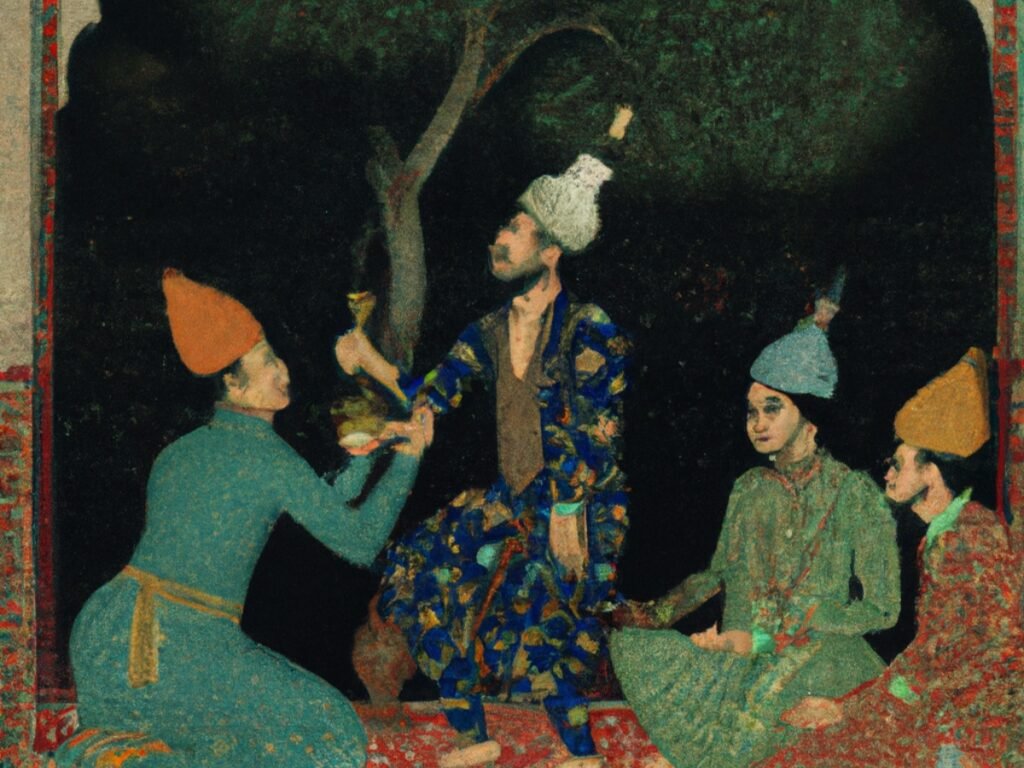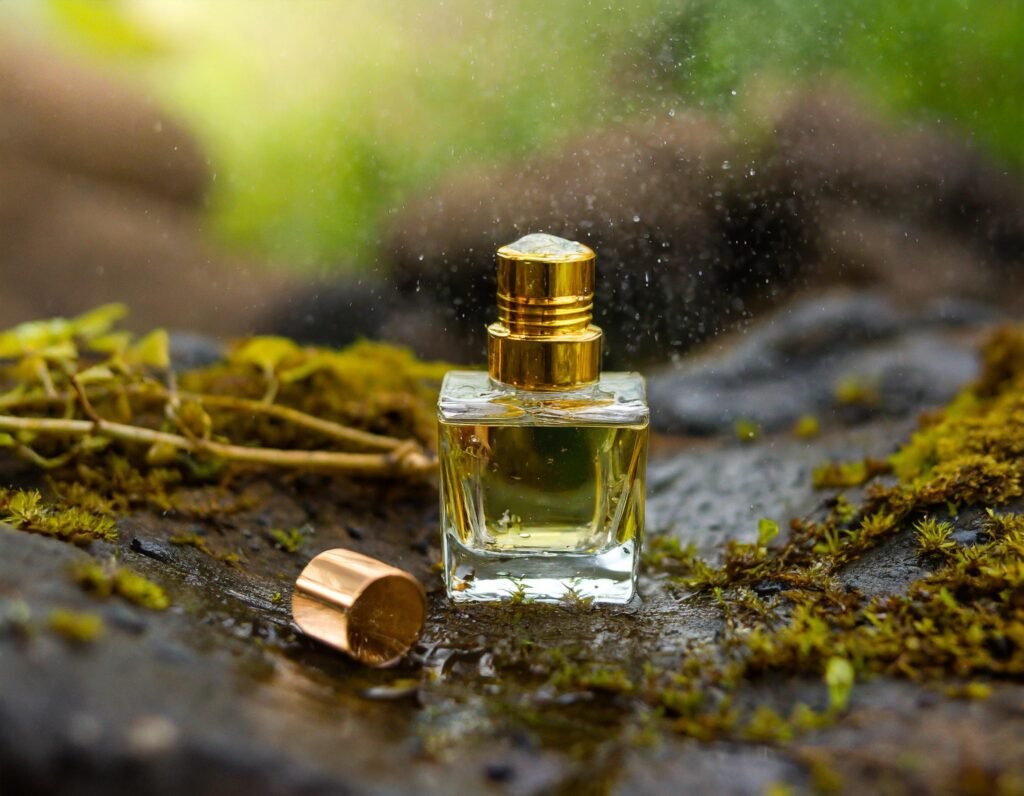Grasse is stunning. Grasse is beautiful.
Grasse has fragrances like no other places, Grasse makes some of the world’s best fragrances.
Grasse in France is the Perfume Capital of the World…
Well, no, the last sentence needs a change, for it is time to put the little town of Kannauj on the world map as the world’s perfume capital.
A rather nondescript town in the Indian state of Uttar Pradesh, Kannauj has been fragrant with perhaps the oldest version of modern-day perfumes, attar (also ittar). Unlike in Grasse, the art of perfumery is more than 400 years old in Kannauj. Evidentially, the perfume industry in Grasse can be traced back to 200 years, at best.
Art of perfumery!
Of course, Grasse has some of the most advanced perfumeries and distilleries to churn out fragrances that will make you more than just heady.

Back in Kannauj, tonnes of fresh flowers, especially Damask rose and jasmine, are brought in every morning, usually fresh from the fields around. Traditional distilleries, some of which are centuries old, have a surprisingly torn look about them. Of course, the story is entirely different as you step inside any of these, for there is a flurry of activities to fix your attention on.
Recommended read: Legend of Uttarakhand’s Panch Kedar Temples
The fresh petals are poured into gigantic copper vessels with water, stirred for hours over roaring fire. Heavy lids are pressed over the vessels, sealed tightly with clay. The rising steam courses to another vessel, carrying a carrier oil, usually sandalwood oil, via thick bamboo reeds. The process is repeated at least once again, infusing the oil with disarming fragrances.

This, of course, is not the end of it. If you have ever taken in the heady, sometimes fleeting fragrance of any attar, you would know that there is more to the craft. The infused oil, once the perfumer is happy with its quality, is packed into camel-skin pouches or bottles, and is left to age for months.
How costly is Kannauj attar?
What you have by the end of it all is lovingly referred to as the liquid gold. But then, you would call it gold even if you are not in love, for the attar fetches more than $3500 dollars for a kilogram of it. The quality of Kannauj attar is so rich that a bulk of the produce is bought by Dubai-based perfumeries, creating some of the most sought after perfumes in the world.

Dig a little deeper and you would understand that the erstwhile nawabs and almost all the Mughal rulers had a penchant for attars. With both Agra, the famous Mughal capital, and Lucknow that saw the opulence of nawabs just some kilometers away from Kannauj, its place as India’s most fragrant city is justifiable. In fact, Akbar had an exclusive place in his court for craftsmen that excelled and worked on creating rich fragrances.
Kannauj attar – More than roses

While Kannauj’s Damask rose fragrance is widely known and much celebrated, vetiver is a wonder in itself. In Hindi, we call it khus-khus, a rather ordinary looking grass that fetches a very impressive sum in the market.
Indian kids, especially those born between 60s and 90s best know khus-khus as a green colour summer drink that would make its way to households every summer, nicely labelled and bottled in transparent glass. The grass is one of the most potent coolants, and the medicine world also labels it as useful to battle insomnia, nervous tension and the big silent killer on the loose—depression.
Now Kannauj is where you can see vetiver simmering in cauldrons, to be distilled as both a fragrance and essential oil. Such is the lure of vetiver that a local politician was served a police notice for trying to grow the grass illegally in a national forest! Well, we get the lure.
Kannauj’s love for petrichor

Attar makers in Kannauj understood petrichor before it became a common word on social media. Most Hindi-speakers simply call petrichor as mitti ki khushboo, or the alluring smell of wet earth/soil when it rains.
In my chase of enchanting fragrances, I still haven’t found anyone not in love with this earthy smell, its notes subtle but lingering and reminiscent of wonderful days for most. I carry a petite vial of it in my bag for days that are beautiful and more so for days that can go bad. And for that, I thank Kannauj.
Kannauj attar – the famous mitti attar
This old city is believed to be the birthplace for the mitti (soil) fragrance. It is also one of the best-kept secrets of the city for the process of getting it right has passed within families, one generation to another, closely guarded. In theory, to capture the scent of rain, India’s bountiful monsoon, feels nothing less than some sort of wizardry.
Usually, river mud is used to create this magic fragrance. One might be roaming around somewhere in the arids of the Sahara, but a vial of this attar is potent enough to let them feel the rain and its magic smell, if only they can close their eyes and imagine.
You’ll like this video:
Sinewy workmen can often be seen hauling river mud or earthen clay in the said metal vessels, creating the fragrance that nobody can hate. That is the magic of Kannauj.
While I have often made my way and would keep visiting the old city of Kannauj, dreaming of learning the skills that make attars and probably crafting a few of my own, it’s time that you do so too. Quite near the famous Taj Mahal of Agra, this city basks in its less-talked about glory, with some of the world’s most famous perfumers (who would not like to be named) roaming its bylanes in search of more wonders.











![They say it’s going to be a harsh summer.
We say it’s going to be a chilly vacation!
Our favourite pick of South India’s most offbeat hill stations.
[summer, travel, India] They say it’s going to be a harsh summer.
We say it’s going to be a chilly vacation!
Our favourite pick of South India’s most offbeat hill stations.
[summer, travel, India]](https://scontent-bom5-1.cdninstagram.com/v/t51.75761-15/491447958_17906810376140553_82115311286037935_n.jpg?stp=dst-jpg_e35_tt6&_nc_cat=111&ccb=7-5&_nc_sid=18de74&efg=eyJlZmdfdGFnIjoiQ0FST1VTRUxfSVRFTS5iZXN0X2ltYWdlX3VybGdlbi5DMyJ9&_nc_ohc=nfxa92E1r5oQ7kNvwEhcgLm&_nc_oc=AdmEoCq68fndhWIpkfPllDrxNPTGJYMrRFTGu8Q9BSa6wjMfSiB5zIoYb58qBR4FenaXIqM-LS7ZwwzXYuvqpQWH&_nc_zt=23&_nc_ht=scontent-bom5-1.cdninstagram.com&edm=ANo9K5cEAAAA&_nc_gid=20xdExlGMm2Kv-_Flg2zaw&oh=00_Afh2gJ2m3T2Q_kBee9G8Ruix9Zc32aAmZSoJwXmhHFOUJw&oe=69313C77)
